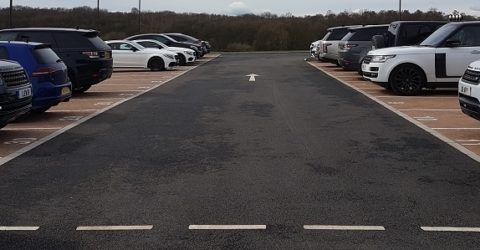Why a new underground map system could simplify your next broadband contract
The National Underground Asset Register could be transformative for ISPs and consumers alike, shining a light on what's below the ground

If the phrase ‘National Underground Asset Register’ makes your eyes glaze over, we understand.
It’s hardly the most enticing of names, and it certainly doesn’t suggest anything which will be of public benefit – or improve broadband services.
Yet that’s exactly what this long-overdue scheme ought to do.
So put your preconceptions to one side while we explain why the National Underground Asset Register (which we’ll abbreviate to NUAR) could one day help you save money on broadband.
What lies beneath
Incredibly, until now, there has been no national record of the infrastructure below our roads, buildings and car parks.
The closest we’ve come is the free Line Search Before You Dig service, which offers civil engineering companies an online asset search.
Openreach also has a proprietary infrastructure map, but both systems are patchy and incomplete.
Work on utilities has often been conducted with a degree of blind faith, since engineers haven’t always known what they’re digging down towards.
That explains the myriad stories of gas workers severing water mains, and electrical engineers accidentally slicing through broadband cables with pneumatic drills.
Many of the UK’s four million annual infrastructure holes are made in the wrong place.
As well as damaging cables, this also extends the duration of roadworks while one hole is filled and another is created in the correct location.
This partially explains why utility works can take so long, because great care is needed when digging below the road/pavement surface, and things aren’t always where they’re supposed to be.
Your correspondent once watched a five-strong team of Virgin Media engineers systematically lifting every manhole cover on a residential street, looking for a broadband access point.
MoreHow does Virgin’s cable broadband work?
Defeated, they progressed to knocking on people’s doors, and asking whether they had Virgin Media. If so, up came the manhole covers on their driveways and lawns.
If these engineers had been able to access a NUAR, their work would have been much quicker.
Also, the estimated £2.4 billion annual cost of accidental utility damage would be slashed – and anything which lowers infrastructure costs will be beneficial for consumers.
Okay, it’s quite interesting. But how does it work?
The shocking absence of subterranean maps is belatedly being tackled by the UK Government, which has commissioned a digital map of everything under the ground.
This includes gas and electric cables, water and sewerage pipes and broadband infrastructure.
NUAR will offer more benefits than simplifying the job of engineers. It’ll also map out in granular detail where existing networks extend to, and where they’re missing.
Being able to view this in 3D maps will give broadband infrastructure companies far more information about how to improve residential services, or bolster their networks.
New infrastructure will be automatically uploaded, so a new housing estate’s pipework can be plugged into existing maps of the surrounding area as it’s installed.
The benefits are estimated to be worth over £4 billion a year to the UK economy, quite apart from reduced congestion caused by quicker roadworks and less head-scratching in holes.
It could also allow utility companies to join forces to undertake work simultaneously, rather than firm A creating roadworks and firm B arriving on-scene just as they finish.
With years of planning already completed, NUAR is expected to take three years to complete, involving extensive collaboration between industry, government and the Ordnance Survey across England and Wales.
Scotland has its own register, and Northern Ireland will be added to NUAR later.






